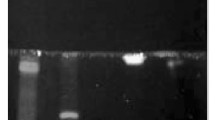This experimental study was aimed at assessing the total polyphenol and flavonoid content of Tragopogon pratensis (folium) vegetal extract and evaluating the histopathological status of mice with liver problems and diabetes during therapy with 20% hydroalcoholic extract of T. pratensis (folium). The diabetes in mice was induced by single intraperitoneal (i.p.) dose of 180 mg/kg b.w. streptozotocin. The experiment involved two congtrol groups: the first (I) group consisted of mice with normal pancreatic function; the second (II) group consisted of mice with experimentally induced diabetes. The third (III) group of mice with experimentally induced diabetes was treated with T. pratensis extract at a dose of 150 mg/kg b.w.. The first and second groups were not treated, while the third group received daily the established medication once a day, in the morning at the same time (9 a.m), for five weeks. The obtained results showed that the administration of T. pratensis tincture triggers the hepatic regenerative processes, restores functional activity of the liver, and positively influences functionality of the pancreas. The molecular docking analysis supports results of the experimental study.


Similar content being viewed by others
References
A. C. Maritim, R. A. Sanders, and J. B. Watkins, J. Biochem. Mol. Toxicol., 17(1), 24 – 38 (2003).
R. M. Văruţ, C. E. Gîrd, L. T. Rotaru, et al., Pharm. Chem. J., 51, 1088 (2018).
P. M. Patricia, Curr. Opin. Pharmacol., 9, 771 – 779 (2009).
D. A. Butterfiel, Ann. N. Y. Acad. Sci., 8, 448 – 462 (1998).
H. Esterbauer, R. J. Schaur, and H. Zollner, Free Rad. Biol. Med., 11(1), 81 – 128 (1991).
F. Giacco and M. Brownlee, Circ. Res.,107(9), 1058 – 1070 (2010).
R. M. Văruţ, L. T. Rotaru, and M. C. Văruţ, Rev. Chim., 68(8), 1776 – 1779 (2017).
T. Lengauer and M. Rarey, Curr. Opin. Struct. Biol., 6(3), 402 – 406 (1996).
D. Amzoiu, A. M. Stoian, E. Amzoiu, et. Al., Rev. Chim., 66(12), 2013 – 2016 (2015).
D. B. Kitchen, H. Decornez, J. R. Furr, et. al., Drug Discovery, 3(11), 935 – 949 (2004).
C. Florescu, L. T. Rotaru, and R. M. Varut., Rev. Chim., 69(4), 837 – 839 (2018).
T. Miyase, H. Kohsaka, and A. Ueno, Phytochemistry, 31(6), 2087 – 2091 (1992).
R. Fitter, A. Fitter, and B. Marjorie,Wild Flowers of Britain and Ireland – New Guide to Our Wild Flowers, Bloomsbury Publishing PLC (2003), pp. 294 – 295
http: //en.wikipedia.org/wiki/Tragopogon pratensis
V. D. Mitic, S. Jovanovic, and M. D. Ilic, Bulg. Chem. Commun., 46(2), 269 – 276 (2014).
R. M. Varut and L. T. Rotaru, Rev. Chim., 68(2), 228 – 231 (2017).
S. P. Ionescu and E. Savopol, Extract farmaceutice vegetable, Ed. Medicală, Bucureşti (1997), pp. 85 – 87.
I. Popovici and D. Lupuleasa, Tehnologie farmaceuticã, Ed. Polirom, Iaşi (1997), Vol. 1, pp. 359 – 389
Farmacopeea Română, Ediþia X-a, Ed. Medicală, Bucureşti (1993), pp. 921 – 922, 983 – 989, 1019 – 1021, 1051–1055.
R. M. Varut, Med. Res. Chronicles, 6(1), 45 – 49 (2019).
A. Berbecaru-Iovan, Cercetări farmacognostice şi farmacologice asupra unor specii vegetale cu virtuþi hipoglicemiante, Craiova (2009), pp. 119 – 123.
M. D. Hanwell, D. E. Curtis, D. C. Lonie, et. al., J. Cheminform., 4, 17 (2012).
Protein Data Bank, http: //www.pdb.org/pdb/home/home.do
https: //zhanglab.ccmb.med.umich.edu/ModRefiner/
W. L. DeLano, PyMOL, DeLano Scientific, San Carlos, CA (2002), p. 700.
S. P. Nair, N. C. Shah, and R. M. Shah., Biomed. Res., 23(3), 402 – 404 (2012).
M. Akhlaghi and B. Bandy, J. Mol. Cell. Cardiol., 46, 309 – 317 (2009).
G. Sudha, M. Sangeetha, R. Shree, and S. Svadivukkarasi, Int. J. Curr. Pharm. Res., 2, 137 – 140 (2011).
H. F. Waer and S. A. Helmy, J. Nutr. Food Sci., 2, 165 (2012).
Author information
Authors and Affiliations
Corresponding author
Additional information
Translated from Khimiko-Farmatsevticheskii Zhurnal, Vol. 53, No. 11, pp. 10 – 10, November, 2019.
Rights and permissions
About this article
Cite this article
Rotaru, L.T., Văruţ, R.M., Amzoiu, E. et al. Determination of the Antioxidant Capacity of Tragopogon Pratensis Species and Testing Their Pancreatic and Hepatic Regenerative Activity. Pharm Chem J 53, 964–970 (2020). https://doi.org/10.1007/s11094-020-02106-0
Received:
Published:
Issue Date:
DOI: https://doi.org/10.1007/s11094-020-02106-0




